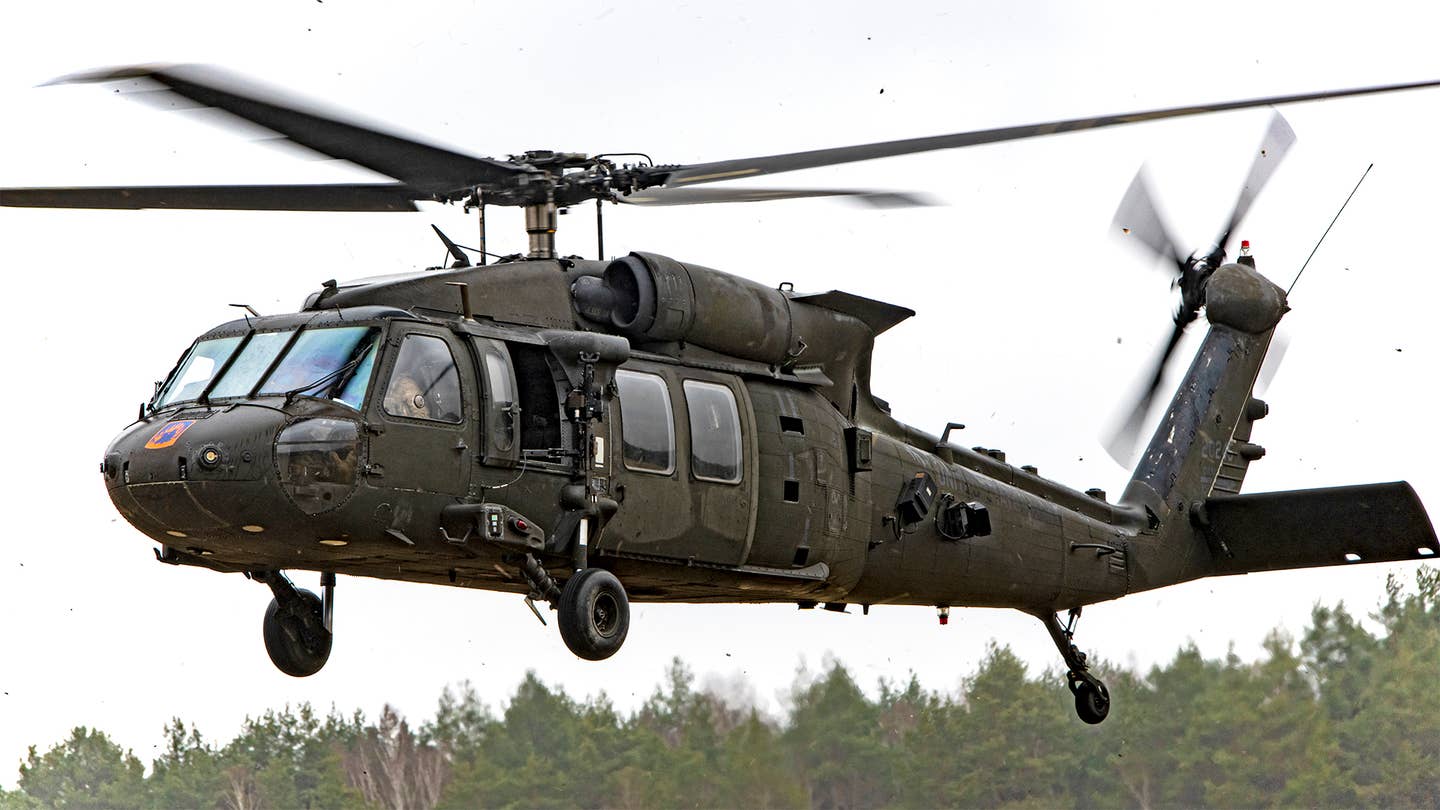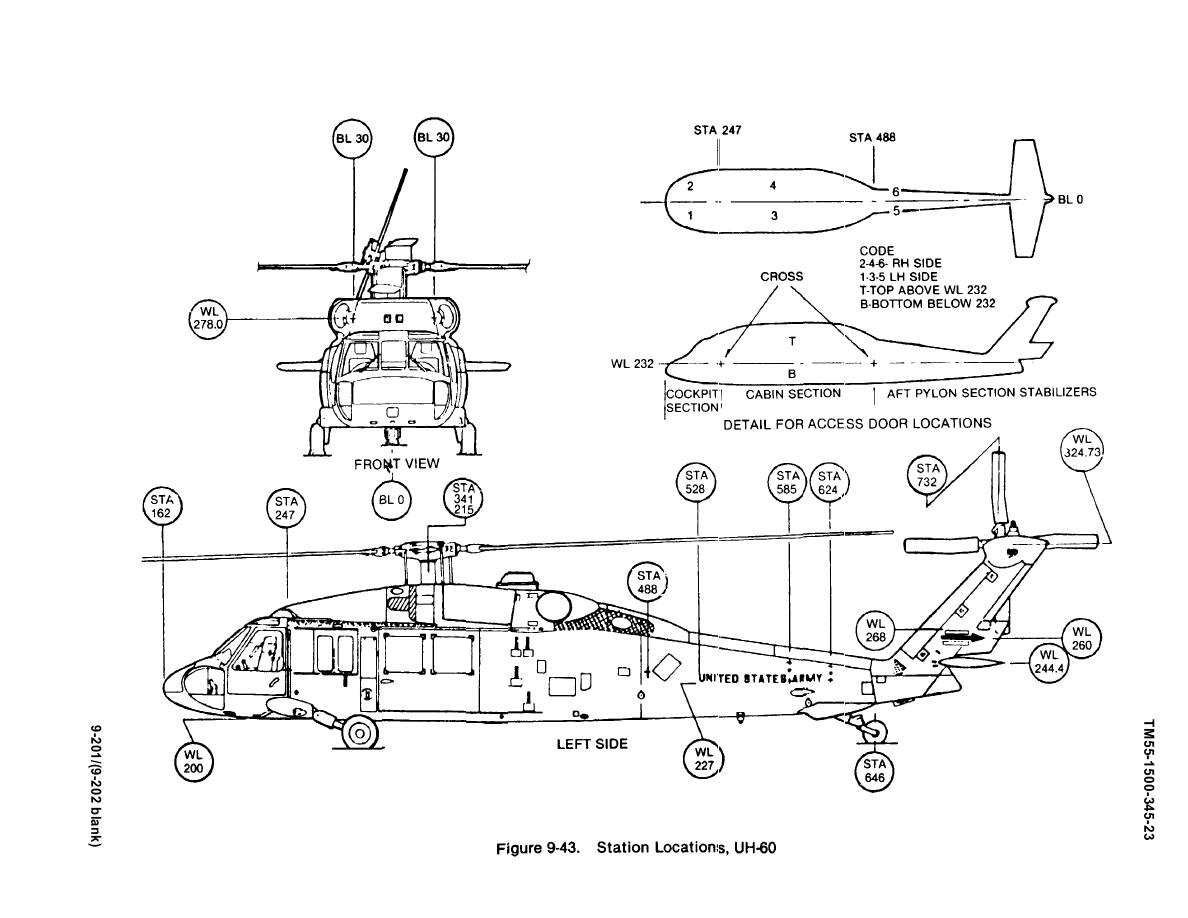All about Uh-60
Wiki Article
An Unbiased View of Uh-60
Table of ContentsNot known Details About Uh-60 How Uh-60 can Save You Time, Stress, and Money.Uh-60 - QuestionsUh-60 Things To Know Before You Buy
helicopter components Many helicopters the engine turns a shaft that attaches to an input quill on the transmission; the main rotor pole comes right out of the top of the transmission and also the tail blades driveshaft links to an output quill 90 degrees out of the mast. Spinning the blades which has an aero foil section causes lift, enabling the helicopter to climb vertically or hover.There are lots of terms connected with rotating wing flight and it is essential for a student to end up being acquainted with them to comprehend the auto mechanics of rotating wing flight. The major blades blade performs the very same function as an airplane's wings, providing lift as the blades turn lift being one of the vital wind resistant forces that maintains aircraft up.

Equally as it carries out in a car, a helicopter's transmission sends power from the engine to the primary and tail blades. The transmission's main transmission steps down the speed of the primary rotor so it doesn't revolve as swiftly as the engine shaft. A 2nd gearbox does the same for the tail blades, although the tail blades, being much smaller, can turn faster than the major blades.
The 7-Second Trick For Uh-60
Early helicopters relied upon reciprocating gasoline engines, but modern helicopters make use of gas wind turbine engines like those located in commercial airliners. uh-60. 1. Root: The internal end of the blade where the blades attach to the blade grasps. 2. Blade Grips: Big affixing points where the rotor blade links to the center.Doing this enhances or reduces the lift that the primary rotor materials to the car, allowing the helicopter to acquire or shed elevation. This allows the helicopter to move in any instructions around a 360-degree circle, consisting of onward, in reverse, left as well as.
Helicopters need an entirely different technique of control than aircrafts and also are much more difficult to understand. Traveling a helicopter requires constant focus by the pilot as well as a near-continuous flow of min control improvements. A conventional helicopter has its main rotor over the fuselage, simply aft of the cockpit area, including 2 or even more rotor blades extending out from a central rotor head, or hub, setting up.
This swashplate contains one non-revolving disc and also one revolving disc mounted straight on top. The swashplate is connected to the cabin control stick as well as lever and also can be made to tilt in any kind of instructions, according to the cyclic stick activity made by the pilot, or went up and also down according to the collective bar motion.
The Only Guide for Uh-60
The quantity of lift created is established by the pitch angle (as well as rate) of each blades blade as it moves via the air. Pitch angle is called the Angle of Assault when the rotors are in motion. This pitch angle of the blades is controlled in 2 means collectively as well as cyclically.
Because all blades are altering pitch together, or 'collectively', the adjustment in lift remains constant throughout every complete rotation of the home blades. Therefore, there is no tendency for the helicopter to alter its existing direction aside from right up or down. The pictures listed below reveal the result of increasing the collective bar on the swashplate and also rotor blades.
Naturally, actual rotor head systems are much more difficult than this image reveals, but the basics coincide. The cyclic control is made by moving the control stick that rises from the cabin floor between the pilot's legs, and can be relocated in all instructions besides up as well as down.
The Buzz on Uh-60

The pictures listed below reveal the result of this cyclic control on the swashplate and rotor blades. As the swashplate is tilted, the opposing rods relocate in contrary directions. The setting of the poles and for this reason the pitch of the individual blades is various at any given factor of turning, thus creating different amounts of lift around the rotor disc.
As the stick is leaned over in any type of instructions, so the angle of the plate adjustments very slightly. uh-60. This change of angle corresponds straight to what is occurring to the rotor disc at the very same time i. e. the side of home plate that is greater stands for the side of the rotor disc creating more lift.
these details This tail rotor is used to control the yaw, or turning, of the helicopter (i. e. which means the nose is directing) as well as to clarify this we initially require to comprehend torque. Torque is a natural pressure caused by any kind of transforming object and in a helicopter it is triggered by the engine turning the major rotor blades; when the blades are rotating then the all-natural reaction to that is for the body of the helicopter to begin rotating in the contrary use this link instructions to the blades.
Report this wiki page